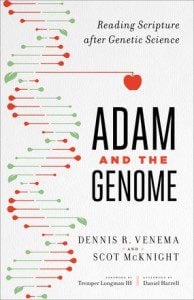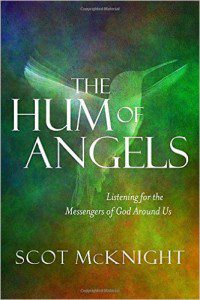A nice set of posts by Bob Robinson. The series started with Embracing the True, the Good, and the Beautiful and also included a post on Art in Action: Toward Shalom and also included Finding God in Secular Movies? and several posts on Andy Crouch’s typologies of condemning, critiquing, copying, and consuming culture. The latest post is about how Creation/Fall/Redemption provides a better paradigm for cultural engagement.
April Diaz reflecting an almost-meltdown: “My days are out of control recently. I’m working way too much. Way. It’s a unique season of ministry where I’ve finished most days with a list of “to dos” longer than when I’ve started the day. Every single day has dealt with painful emails, difficult conversations, disappointed followers, misunderstood decisions, and awkward transitions. Literally, every single day. It’s a season I hope to leave sooner than later. Tears have defiantly fallen more often than I’d like. I’ve been hanging on by a thread while passionately casting a vision of a new thing I believe God’s calling our community toward [Isaiah 43:18-19]. Most days I feel a complicated tension of intense conviction and a weary beat down.”
 Justin Taylor has a good post on the “angry Calvinist” issue. Calvinism ought to produce humility but the intoxication of its subject has led some — and their number is miniscule even if quite noisy — to be angry or arrogant. It’s not Calvinism but the person. It would be reasonable to think each system of thought would have the same number of angry proponents.
Justin Taylor has a good post on the “angry Calvinist” issue. Calvinism ought to produce humility but the intoxication of its subject has led some — and their number is miniscule even if quite noisy — to be angry or arrogant. It’s not Calvinism but the person. It would be reasonable to think each system of thought would have the same number of angry proponents.
10 Reasons why we should care about science and faith discussions by Thomas Jay Oord.
Rachel Blom: “A very good friend of mine is single. I’ve never considered him different from all my other friends, most of whom are married, but he feels he is. He is a Christian, like me, and till recently we attended the same church. The difference is that he often feels excluded in the sermons we both hear, while I don’t.”
Bibledex, quite the source.
Robert Henry, on GLBT, on talking with instead of talking about.
Jamal Jivanjee: “Do you see where I am going with this? The evangelical system has become a glorified ‘pyramid’ scheme. Like the soap, we are taught to tell people about this amazing man named Jesus Christ who loves us and died for us. We tell the world that He is the living bread. We tell people that the water He gives will satisfy. We tell people that he comes to give us abundant life, etc… then, shortly after a person is interested in this Christ and says yes, the focus changes. Instead of discovering and experiencing the depths and beauty of this glorious man, we are quickly taught that there are things we must ‘do’ to get more and train more Christ ‘distributors’. This was true in my own life. As a young man, I fell in love with Jesus Christ and I said yes to His proposal. The more time I spent in the religious system, however, the more that the focus shifted off of Him and on something else. I was taught that more ‘distributors’ were needed, and my job was to go get them and train them in the same way that my co-worker sold me on Amway. I speak from experience when I say that this focus on ‘doing’ does not lead to life, but away from life. There is a reason for this.”
Meanderings in the News
 Good news about heart disease detection and prevention: “A study published on the BMJ website showed patients with xanthelasmata were 48% more likely to have a heart attack. Xanthelasmata, which are mostly made up of cholesterol, could be a sign of other fatty build-ups in the body. Cardiologists said the findings could be used by doctors to help diagnose at-risk patients. The research team at the Herlev Hospital in Denmark started following 12,745 people in the 1970s. At the start of the study, 4.4% of patients had xanthelasmata. Thirty three years later, 1,872 had had a heart attack, 3,699 had developed heart disease and 8,507 had died – and the data showed that those with the yellow markings around the eyes were at greatest risk. Those with the markings were 48% more likely to have a heart attack, 39% more likely to have developed heart disease and 14% more likely to have died during the study.”
Good news about heart disease detection and prevention: “A study published on the BMJ website showed patients with xanthelasmata were 48% more likely to have a heart attack. Xanthelasmata, which are mostly made up of cholesterol, could be a sign of other fatty build-ups in the body. Cardiologists said the findings could be used by doctors to help diagnose at-risk patients. The research team at the Herlev Hospital in Denmark started following 12,745 people in the 1970s. At the start of the study, 4.4% of patients had xanthelasmata. Thirty three years later, 1,872 had had a heart attack, 3,699 had developed heart disease and 8,507 had died – and the data showed that those with the yellow markings around the eyes were at greatest risk. Those with the markings were 48% more likely to have a heart attack, 39% more likely to have developed heart disease and 14% more likely to have died during the study.”
Thomas Kren reports on the Getty book that has been in storage for 800 years!
On the behavior of teenagers: “My son’s high-speed adventure raised the question long asked by people who have pondered the class of humans we call teenagers: What on Earth was he doing? Parents often phrase this question more colorfully. Scientists put it more coolly. They ask, What can explain this behavior? But even that is just another way of wondering, What is wrong with these kids? Why do they act this way? The question passes judgment even as it inquires…. The first full series of scans of the developing adolescent brain—a National Institutes of Health (NIH) project that studied over a hundred young people as they grew up during the 1990s—showed that our brains undergo a massive reorganization between our 12th and 25th years. The brain doesn’t actually grow very much during this period. It has already reached 90 percent of its full size by the time a person is six, and a thickening skull accounts for most head growth afterward. But as we move through adolescence, the brain undergoes extensive remodeling, resembling a network and wiring upgrade. … These studies help explain why teens behave with such vexing inconsistency: beguiling at breakfast, disgusting at dinner; masterful on Monday, sleepwalking on Saturday. Along with lacking experience generally, they’re still learning to use their brain’s new networks. Stress, fatigue, or challenges can cause a misfire. Abigail Baird, a Vassar psychologist who studies teens, calls this neural gawkiness—an equivalent to the physical awkwardness teens sometimes display while mastering their growing bodies. The slow and uneven developmental arc revealed by these imaging studies offers an alluringly pithy explanation for why teens may do stupid things like drive at 113 miles an hour, aggrieve their ancientry, and get people (or get gotten) with child: They act that way because their brains aren’t done! You can see it right there in the scans!”
Gotta watch out for the mammone: “Young Italians are renowned for their reluctance to leave home, with a study released last year showing that 48% of offspring between the ages of 18 and 39 still live under their parents’ roofs. Young male Italians known as “mammone”, or mummy’s boys, are particularly attached to their mother’s apron strings. After the report was released, a cabinet minister came up with a drastic solution to the problem, proposing legislation which would make it compulsory for teenagers to leave home once they reached adulthood. Renato Brunetta, the minister in charge of streamlining the country’s bureaucracy, admitted that in his youth he too was a “bamboccioni”, which translates as “big baby”, and that his mother made his bed for him until he was 30. Aside from being hooked on their mother’s lasagne and spaghetti, young Italians cling to home because many are employed on precarious short-term contracts and struggle to pay a mortgage or the deposit on an apartment.”
 A nice pic of North Park University to the left.
A nice pic of North Park University to the left.
National Geographic has an interactive map about the world’s population.
An interview with Robert Bellah: “Both an influential scholar and a public intellectual, Robert Bellah is one of the foremost sociologists of his generation. His books and articles have set in motion lasting conversations about the role of religion in public life, both in the United States and around the world. Since retiring from thirty years of teaching at the University of California, Berkeley, Bellah has been at work on his most ambitious book yet, the recently released Religion in Human Evolution: From the Paleolithic to the Axial Age (2011) (Harvard University Press).”
John Mark Reynolds’ recommendation of ten classics to read: “Try to remember these four things when reading the classics. First, most great books require time, much time, to even begin to unlock the good stuff. The process of finding what an author such as Plato said is as important as the “truth” found there. One joy of reading outside an academic context is that there are no deadlines; nobody is grading you. Take the time to read until you see. Second, try not to read alone. Get a small community, read, and discuss. Don’t be ambitious, but do form a small group of fellow readers. My wife belongs to a women’s group of different ages reading patristic theology together. I know communities all over our area where busy people gather to read and discuss the great texts. Social media will help you find such friends, but try to meet together at least once a month. Third, reading a great text brings benefits, but these benefits work in “agricultural time,” not computing time. You sow and then you reap, but the seeds take a bit just to germinate let alone come to the point of harvest. Finally, if we can love our enemies, surely we can love Darwin! Read these great works charitably and with humility. Understand something, appreciate it, and only then judge it. Some Christians stripmine great books for the “good stuff” and hastily condemn the “bad stuff.” Just as a stripminer may destroy beauty in his haste to get coal, so too an overly hasty conclusion about what Christians should learn from a great book may keep the reader from seeing glory of the whole.”
The value of laughter, from Proceedings of the Royal Society, and you can access the whole article free: “Although laughter forms an important part of human non-verbal communication, it has received rather less attention than it deserves in both the experimental and the observational literatures. Relaxed social (Duchenne) laughter is associated with feelings of wellbeing and heightened affect, a proximate explanation for which might be the release of endorphins. We tested this hypothesis in a series of six experimental studies in both the laboratory (watching videos) and naturalistic contexts (watching stage performances), using change in pain threshold as an assay for endorphin release. The results show that pain thresholds are significantly higher after laughter than in the control condition. This pain-tolerance effect is due to laughter itself and not simply due to a change in positive affect. We suggest that laughter, through an endorphin-mediated opiate effect, may play a crucial role in social bonding.”
 Christine Dell’Amore on why overconfidence works: “The results, published today in the journal Nature, showed that overconfidence pays off only when there is uncertainty about opponents’ real strengths, and when the benefits of the prize at stake is sufficiently larger than the costs. “So let’s say you and I are fighting over some resource,” Johnson said. “As long as there is some uncertainty about the outcome and the resource is valuable compared with the costs incurred in fighting for it, then overconfidence is the best strategy.” For instance, if people are fighting over an island with oil reserves, the benefit of accessing the oil might be a hundred billion dollars, while the costs of the war might be ten billion. But if “if the cost of conflict or competition is high, and all for a fairly worthless prize—you’re much better off being cautious.”
Christine Dell’Amore on why overconfidence works: “The results, published today in the journal Nature, showed that overconfidence pays off only when there is uncertainty about opponents’ real strengths, and when the benefits of the prize at stake is sufficiently larger than the costs. “So let’s say you and I are fighting over some resource,” Johnson said. “As long as there is some uncertainty about the outcome and the resource is valuable compared with the costs incurred in fighting for it, then overconfidence is the best strategy.” For instance, if people are fighting over an island with oil reserves, the benefit of accessing the oil might be a hundred billion dollars, while the costs of the war might be ten billion. But if “if the cost of conflict or competition is high, and all for a fairly worthless prize—you’re much better off being cautious.”
Barbara Demick on organic foods in China: “Reporting from Beijing—At a glance, it is clear this is no run-of-the-mill farm: A 6-foot spiked fence hems the meticulously planted vegetables and security guards control a cantilevered gate that glides open only to select cars. “It is for officials only. They produce organic vegetables, peppers, onions, beans, cauliflowers, but they don’t sell to the public,” said Li Xiuqin, 68, a lifelong Shunyi village resident who lives directly across the street from the farm but has never been inside. “Ordinary people can’t go in there.”
Meanderings in Sports
Taylor Branch on the need to change how college sports work: pay the athletes (and then disentangle sports from education). “A litany of scandals in recent years have made the corruption of college sports constant front-page news. We profess outrage each time we learn that yet another student-athlete has been taking money under the table. But the real scandal is the very structure of college sports, wherein student-athletes generate billions of dollars for universities and private companies while earning nothing for themselves. Here, a leading civil-rights historian makes the case for paying college athletes—and reveals how a spate of lawsuits working their way through the courts could destroy the NCAA.”












